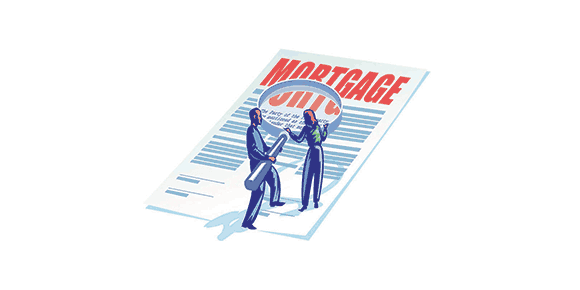A new poll from CIBC, conducted by Nielsen, finds that the majority of Canadians (74 per cent) would opt for a medium-term or longer-term mortgage if they were to acquire, refinance or renew a mortgage today.
Twenty-seven per cent of the respondents think now is the time to look beyond the traditional five-year fixed mortgage for a term of up to 10 years.
“Canadians are recognizing that today's historically low rates won’t last forever and some are looking for ways to bring predictability to their finances over the long term,” said Barry Gollom, vice-president of mortgages and lending at CIBC.
“Most Canadians tend to opt for a fixed rate over five years when choosing a mortgage today. With more than one-in-four Canadians now saying they would choose a longer term of seven or 10 years, we may be seeing the start of a shift to longer terms.”
Rates are at historically low levels as a result of major lending institutions seeking to attract more clients and gain a bigger market share of the market in today’s highly competitive mortgage environment.
Some major banks are now offering a five-year fixed mortgage at 2.74 per cent, amortized over 25 years, for those who qualify. In some instances, other mortgage lenders have offered rates over a five-year period for as low as 2.44 per cent.
Mortgage experts are advising consumers to check out the conditions attached to such low rates before taking the plunge. Restrictions may include severe penalties for prepaying a mortgage loan.
A mortgage broker is able to provide consumers with the benefit of their knowledge of the market and can recommend the best product for their clients.
While a longer term mortgage may not be right for everyone, Gollom said that locking in to a medium-term or longer-term fixed-rate mortgage can reduce the stress that can come with the prospect of raising interest rates.
“If interest rates rise in the next year or two, homeowners with shorter-term mortgages or variable-rate mortgages could see their payments move higher,” added Gollom. “Having a medium-term or longer-term fixed rate can act as a measure of stability and protection, especially for those who have recently bought their first home.”
He said this shift to longer-term, fixed-rate mortgages signals growing interest by Canadians to gain greater control and certainty over their largest financial obligation.
With a consistent and predictable mortgage payment at today’s low rates guaranteed for many years, Canadians may have the opportunity to pay down their mortgage faster and minimize interest costs, which will help to keep them on track for their broader financial goals.
The Bank of Canada is bullish about Canada’s economy, the low interest environment and the fact that inflation has not exceeded its target rate.
“Our current best judgment is that the underlying trend of inflation is somewhere around 1.6 per cent to 1.8 per cent,” said Bank of Canada governor Stephen S. Poloz during a recent speech in Charlottetown, P.E.I.
As long as inflation remains low, there is little risk of a central bank interest rate increase.
The January interest rate cut by the Bank of Canada has contributed to easier financial conditions in Canada. The bank estimates that a household that has renewed a $100,000 mortgage would save about $250 in interest payments this year.
“Finding an expert who can crunch the numbers on a variety of mortgage options while factoring in your other debts, your savings goals and your personal risk tolerance is an extremely important part of the evaluation process,” added Gollom.
Highlights of the poll
• Forty-seven per cent would choose a medium-term mortgage of three or five years, if they were to
acquire, refinance or renew a mortgage today.
• Twenty-seven per cent would opt for a longer term of seven or 10 years.
• Nineteen per cent would go with a shorter term of one or two years.
• Sixty-two per cent of Canadians with a mortgage believe it will be at least 10 years before they are mortgage-free, making it possible to choose a longer term such as a 10-year fixed rate.



